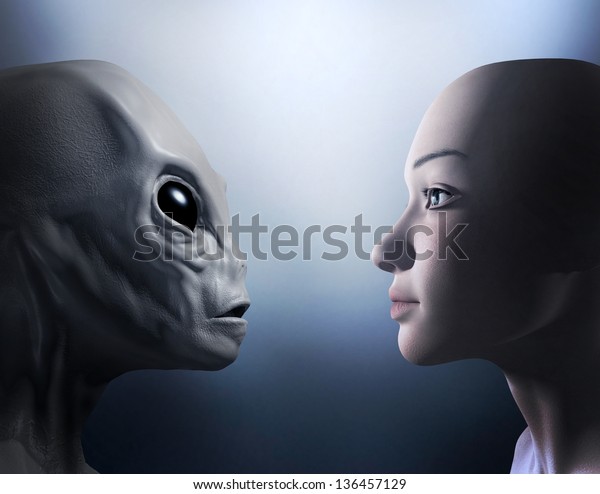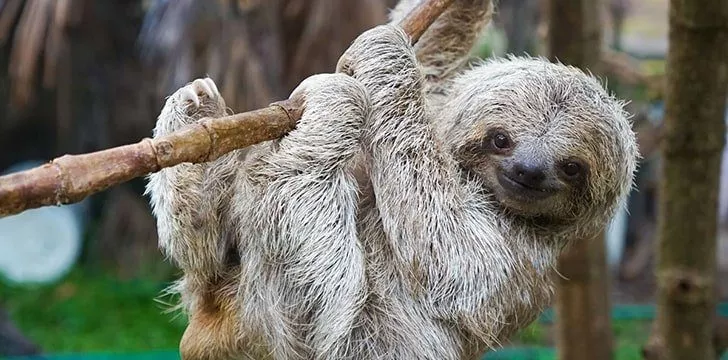NOT using the
panel discussions of the most recent World Science Fiction Convention in San
Jose, CA in August 2018 (to which I be unable to go (until I retire from
education)), I would jump off, jump on, rail against, and shamelessly agree with
the BRIEF DESCRIPTION given in the pdf copy of the Program Guide. But not
today. This explanation is reserved for when I dash “off topic”, sometimes
reviewing movies, sometimes reviewing books, and other times taking up the
spirit of a blog an old friend of mine used to keep called THE RANTING ROOM…
Grinspoon was appointed to a new NASA post in July of 2023. Formerly (or STILL?) Senior Scientist at Planetary Science Institute is now the new Senior Scientist for Astrobiology Strategy.
"Astrobiology is the study of the origin, evolution and distribution of life in the universe. As Senior Scientist for Astrobiology Strategy at NASA Grinspoon will serve as the Agency's senior leader for astrobiology, spearheading efforts from NASA Headquarters to ensure significant progress is made in the field."
After reading LONELY
PLANETS: The Natural Philosophy of Alien Life (2003) by David Grinspoon, his words sparked several thoughts and speculations. He
does, of course, have a “doctor” in front of his name, but it appears that he
doesn’t use it very often. He also has the endorsement of Neil deGrasse Tyson –
the quintessential FACE of astronomy and the immediate successor to Carl
Sagan.
Tyson said of Grinspoon’s book “…brings together what has never before
been synthesized…he is a planetary scientist as well as dreamer, born of the
space age.” Now, that was in 2003.
As is apparent to anyone who reads my blog, I LOVE aliens! I write
about aliens! I do (guardedly) believe that there is intelligent life “out
there, somewhere” – HOWEVER, I don’t believe that we have any real proof yet
and that it is, at this point, an intellectual and philosophical exercise. In fact, I (with all due respect) believe that astrobiology is an...imaginary science. Though I suppose genetic engineering was imaginary once, long ago...
Be that as it may, I’ve only read the first 20 or so pages of Grinspoon’s
book and skimmed his website (http://funkyscience.net/),
but I find myself looking forward to following this guy for some time to come!
I’m a bit over
halfway through the book now (page 198) and I’ve placed an order for my own
copy through a Half-Price Books near me. I’m even (*gasp*) dog-earing my
Library copy for later transfer to the book when I get it.
Couple of things I
noticed thus far: the book is old. Published in 2003, (TWO FREAKING DECADES AGO!!!) it was most likely
written in 2002. This was substantially BEFORE the Kepler Telescope was launched
into an Earth-trailing heliocentric orbit in 2009, and absolutely FOREVER before the Webb Space Telescope.
Six years later, Kepler
celebrated the discovery of its 1000th confirmed exoplanet. Another
three years followed Kepler sweeping more and more prizes into its discovery bin.
Then “On October 30, 2018, after the spacecraft ran out of fuel, NASA announced
that the telescope would be retired. The telescope was shut down the same day,
bringing an end to its nine-year service. Kepler observed 530,506 stars and
discovered 2,662 exoplanets over its lifetime…” (Anyone else hear a faint echo
of “…its five-year mission, to explore strange new worlds, to seek out new life
and new civilizations, to boldly go where no [one] has gone before!”?)
Despite the age of
the book and now that I’ve read half of its 416 pages, I’m puzzled by Grinspoon’s
not mentioning “hot Jupiters”. With statements like: “In the hot regions near
the Sun, it snowed flakes of metal and
rock. Farther out, around the present orbit of Jupiter, it was cold enough for ices
to form: both the familiar snowflakes of water ice that adorn winter on Earth
and more exotic snow of frozen methane and ammonia.” (page 82); and “The
initial segregation of material by temperature, which made metal and rock near
the Sun, and ice farther out, has been preserved.” (page 83). He obviously doesn't mention the Grand Tack model of the solar system (Proposed in 2018, it states "In planetary astronomy, the grand tack hypothesis proposes that Jupiter formed at a distance of 3.5 AU from the Sun, then migrated inward to 1.5 AU, before reversing course due to capturing Saturn in an orbital resonance, eventually halting near its current orbit at 5.2 AU.")
Why is that? He
DOES mention the discovery that the star 51 Pegasi had a planetary companion.
That happened in 1995 (embarrassingly, this story doesn’t start until page 209
and as I mentioned, I’ve only just today reached page 198!). After this
account, Grinspoon goes on to marvel at the discovery of some hundreds of
extrasolar planets (!), having only a faint idea that Kepler would soon blow
that number out of the water.
My other trouble
is that when discussing Venus, he makes virtually no mention of the fact that
it has a retrograde rotation when compared to the rest of the planets (I don’t
count Uranus among those having a retrograde rotation. That gas giant’s
rotation is retrograde only because
its “north” pole is actually south of its “equator” (the Solar Equator, if you
will. That is, the planets and minor planets orbit the Sun orbit in the same
direction on pretty much the same plane. Confused? OK, this is how I explain it
to my astronomy classes. Imagine your head is the Sun. If you stick your arms
out and start to turn slowly in (ignoring the direction at this time) and stuck
ball bearings of increasing sizes on your arms with duct tape at increasing distances
from your head, you would have a basic illustration of the Solar System as it
turns in space. Imagine then, that each of the ball bearings are turning the same
direction: except for Venus. It rotates in the opposite direction of everyone
else – and it turns VERY, VERY slowly. When you reach Uranus, let it keep
spinning in the same direction, but tip its north pole 98 degrees (90 degrees
is like a “90 degree angle” or as you may remember from geometry or trigonometry,
a “right angle”.) Uranus is tipped MORE than that…but it’s still rotating the
same direction as it did when it was upright…but now it’s spin, relative to the
other planets, is backwards (aka “retrograde”).
At any rate, Dr.
Grinspoon talks about what it is that has created Venus’ hellish conditions and
while he does include its location (closer to the Sun than Earth), the fact
that the Sun is brighter and hotter today than it was when the Solar system
formed), and a peculiar venology (it can’t be “geology” and “aphrodology” just
sounds weird…) that includes a sort of cyclical disruptive plate tectonics (pages
171-173); he doesn’t mention the slow, retrograde rotation. By slow, I mean
that a “day” on Venus is 243 Earth days; and the Sun would rise in the west and
set in the east…eventually.
It could be that I
haven’t reached those pages yet, so we’ll see.
Perhaps the
biggest “kick-in-the-teeth” is that he clearly lays out what happened to alter
our Solar system longer ago than 65,000,000 years: “As the planets approached
their final sizes, giant also-rans, the contenders that could have been
planets, came hurtling down to Earth (and Mercury, Venus, etc.) at speeds of
tens of thousands of miles per hour. These final giant impactors left a trail
of destruction throughout the solar system, stripping Mercury of its outer rock
mantle, leaving Venus spinning backward, and knocking Uranus on its side And in
an event as propitious for us as it was random, a Mars-size protoplanet smacked
into the young, still-forming Earth, splashing a massive ring of vaporized rock
into Earth orbit, which quickly condensed to make out singular, giant Moon.” (page
82)
If any of you ever
read the first book of my proposed series HEIRS OF THE SHATTERED SPHERES:
Emerald of Earth (which is serialized here https://stupefyingstories.blogspot.com/
starting in January or so…), I have a slightly more fantastic explanation for
the current state of the Solar system. Emerald Marcillon’s mother, Nhia Okon,
explains to a group of high-ranking military brass:
“The evidence
we’ve gathered so far clearly indicates that a massive object, probably a
microscopic black hole, grazed Uranus and tipped it on its side….A fleet of
invading interstellar warships, using black-hole-energy technology probably
experienced a disastrous explosion shortly thereafter. Debris swept through the
solar system, probably missing Saturn but raining down on Jupiter and setting
off the Great Red Spot hurricane…The worst was yet to happen…Mars had shallow
oceans that teemed with microscopic life forms. A large rock, possibly an
asteroid knocked from a stable orbit and carried on the shockwave of the
explosion, slammed into the planet, blowing away much of its air allowing the
oceans to boil away under low pressure…Another asteroid carried on the
shockwave struck off the coast of what would one day be the Yucatan Peninsula.
The dinosaurs and thousands of other life forms, already environmentally and
genetically stressed, were launched into extinction…This is the world of an
alien, probably sauroid intelligence native to the planet we now call Venus.
They were aggressive and powerful. Spreading through our solar system, we have
evidence that they conquered beyond it. The invasion fleet had come to put a
stop to it….But the accident that destroyed the fleet and saved the sauroids
from certain invasion, next threatened them with the mindless destruction of
chance…An object nearly large enough to split Venus in half hit the sauroid
moon, knocking it cleanly out of Venus’ orbit, where it drifted until the sun
captured it again, the molten scar on its surface glowing red hot for nearly a
century. The world we call Venus was pounded by meteorites sleeting through the
vacuum of space. A second monstrous object was large enough to reverse Venus’
rotation…The solar system had been reshaped and the intelligences on the new,
second planet of the shattered star system were extinct. We are the heirs of
those shattered spheres. We are the ones who must piece together the details.
We are the ones who must find the bits of technology that we can use to go to
the stars...”
I’ll leave you
with this, and I’ll continue next time.







.jpg/220px-Falcon_9_Demo-2_Launching_6_(3).jpg)
